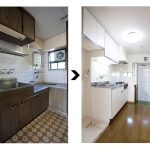When it comes to providing a new product, almost everything begins with a prototype. While several different ways of producing a functional rendering of a model are currently available, one of the most common and efficient, ways of doing so is through CNC prototype machining. While available for many industries, it is currently popular for the automotive industry.
Reasons for Preference
The automotive industry and its suppliers choose CNC machining for prototype production based on its capabilities to produce what they specific. The process possesses certain desirable qualities
* Accuracy: Parts emerge with highly accurate renditions including tight tolerances
* Precision: This technology produces more precise prototypes than manual machining. The results are also comparable to those produced through 3D production methods
* Replicability: Prototype machining quickly and efficiently reproduces a single or multiple replicas.
* Speed: The process is fast and efficient
* Materials: Machining will utilize the same materials of the final product. This allows companies to see how the final product will appear and, more importantly, how it will perform in this material
What the automotive industry and its parts suppliers also find attractive is the affordability of the process. It is cost-effective. Overall, a prototype for this industry helps to ensure the materials are right for a product while making sure it functions according to the desired result. By relying on CNC machining, automotive production facilities can decrease the potential problems and find solutions to possible issues before they manifest as such.
CNC Prototype Machining
Manufacturers have several options to produce a functional prototype for their industry. However, when taking a design from paper to functional model, those who work in or supply the automotive sector still turn to CNC prototype machining. They find this method to be a proven means of producing an accurate, functional 3-D model capable of passing easily the diverse Failure Mode Effects Analysis (FMEA). As a result, the prototype that emerges meets the desired specifications for durability, quality, and precision.







